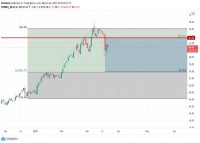|
The Best vs. the Rest In the previous pages Jon Sundt described a key feature of managed futures, namely the huge differences between managers' returns in any given period. We asked for evidence and Mr. Sundt's team kindly provided it. Here you'll find a discussion of this issue and what it means for investing with commodity trading advisors. Picking a better mutual fund manager may make a difference, but not a huge one. Mutual funds, say in actively managed large-cap US equity, correlate highly with each other as well as with market indices. They not only go up and down together but stay within a relatively tight band. By contrast, picking the right CTA or hedge fund can make the difference between a steep loss versus a substantial gain. The chart illustrates this using data from Altegris' managedfutures.com database. International Traders Research, Inc., an affiliate of Altegris, supplies the performance information for alternative investment managers that is available on managedfutures.com. Each bar in the chart indicates the returns for 108 managers. The measure used is a two-year annualized rolling return for every 6 months. The darker part of each bar represents the larger number of managers that are clustered around a specific return. The group's mean for the period is indicated on the bar. The full period under consideration includes both great and lackluster years for managed futures as a whole. That is, during the years from 2004 through 2008 returns varied widely over time for the entire group of managers. There were years where the mean rolling return was around 3%, whereas in 2008 the group averaged more than 19%. Regardless of the variation in the group mean across the years, at any given time there were some managers who lost money and others who made high returns. At the very extremes of this spectrum, one finds 50 percentage point swings'some managers lost 20% while others gained more than 30%. Those are the tails of the distribution, but even if you disregard the extreme tails, picking the right manager still gives you a huge advantage. Or, from a glass-half-empty perspective, a bad choice could mean a loss even when the strategy does well. 2008 was a very good year for CTAs as a group, nevertheless there were CTAs that made a loss. Below the surface of returns is a complicated story. Mr. Sundt pointed out several reasons for the wide dispersion. One is that entry is relatively easy. As he put it, "Someone can register, open a $100 K trading account with his grandma's money, post three good years, hire a marketer and make a lot of people think he has the goods." Many players in this space are not professionals, though they may seem like professionals, he says. Many entrants have a good idea that works for a while, but they lack the ability to develop a program that performs reasonably consistently over time. After a glowing track record that attracts some money, the luck runs out. But there is another major reason for the dispersion: CTAs pursue different approaches. They focus on different markets, have different time frames, look for different sorts of movements. Good managers can make a lower return than the average simply because their particular style does not work in certain market conditions. An investor has to consider whether the divergence in returns is due to differences in strategy, investment ability, business structure or some other factor. To make it even more complicated, competent managers can lose their edge over time. For instance, a system may cease making money because the type of trade it captures becomes too crowded as other traders recognize the same opportunity. A good manager can become preoccupied with personal issues or his golf game and less interested in the business. What all this means is that due diligence matters a lot and quantitative analysis of returns is at best a starting point. Qualitative questions are key to understanding why a CTA may be in a particular place in the wide distribution and what that may mean for the future. The questions have to be asked continually for successful active investing in managed futures. An investment that made sense three years ago may not any more. The decision of whether to stay with a manager, with the ongoing due diligence it requires, is as important as the initial investment decision. |
|
This article was published in Opalesque Futures Intelligence.
|





 RSS
RSS











